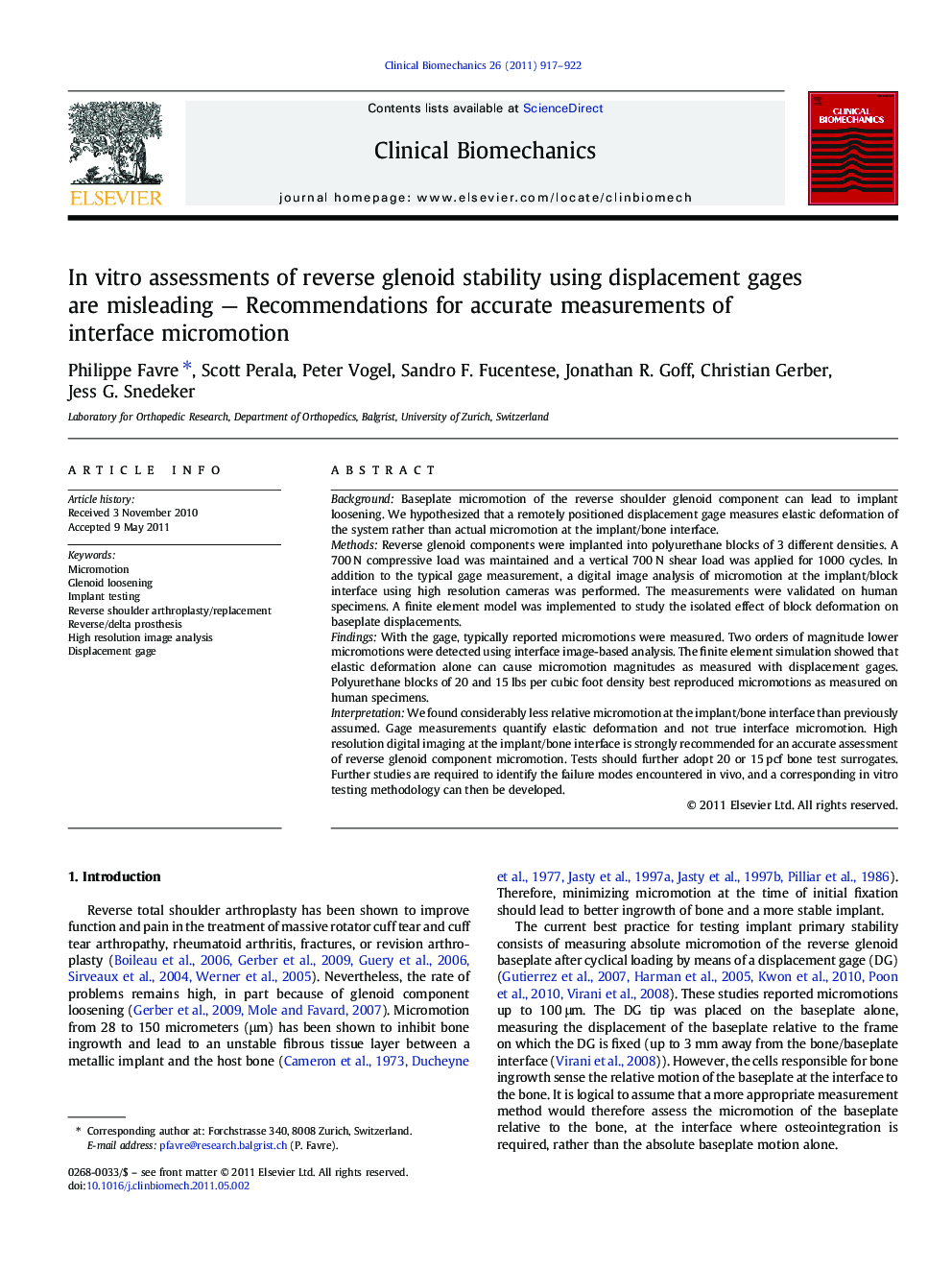| کد مقاله | کد نشریه | سال انتشار | مقاله انگلیسی | نسخه تمام متن |
|---|---|---|---|---|
| 6205189 | 1264950 | 2011 | 6 صفحه PDF | دانلود رایگان |

BackgroundBaseplate micromotion of the reverse shoulder glenoid component can lead to implant loosening. We hypothesized that a remotely positioned displacement gage measures elastic deformation of the system rather than actual micromotion at the implant/bone interface.MethodsReverse glenoid components were implanted into polyurethane blocks of 3 different densities. A 700Â N compressive load was maintained and a vertical 700Â N shear load was applied for 1000 cycles. In addition to the typical gage measurement, a digital image analysis of micromotion at the implant/block interface using high resolution cameras was performed. The measurements were validated on human specimens. A finite element model was implemented to study the isolated effect of block deformation on baseplate displacements.FindingsWith the gage, typically reported micromotions were measured. Two orders of magnitude lower micromotions were detected using interface image-based analysis. The finite element simulation showed that elastic deformation alone can cause micromotion magnitudes as measured with displacement gages. Polyurethane blocks of 20 and 15Â lbs per cubic foot density best reproduced micromotions as measured on human specimens.InterpretationWe found considerably less relative micromotion at the implant/bone interface than previously assumed. Gage measurements quantify elastic deformation and not true interface micromotion. High resolution digital imaging at the implant/bone interface is strongly recommended for an accurate assessment of reverse glenoid component micromotion. Tests should further adopt 20 or 15Â pcf bone test surrogates. Further studies are required to identify the failure modes encountered in vivo, and a corresponding in vitro testing methodology can then be developed.
Journal: Clinical Biomechanics - Volume 26, Issue 9, November 2011, Pages 917-922